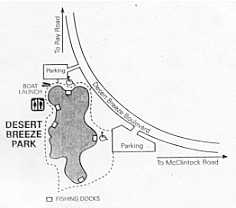


You will be required to wear a uniform and comply with the National Park Service uniform standards.Use find a park to contact specific parks for more information on government housing.Government housing may be available but is not guaranteed.Occupancy of government quarters may be required.Pre-employment medical exam and drug testing are required.Must pass the Physical Efficiency Battery (PEB) prior to start date.Must possess a National Registry or State issued EMT certification in order to receive consideration for LE Ranger (EMT).Must possess or be able to obtain a NPS Type II Law Enforcement Commission.Selectee will be required to participate in the Direct Deposit Electronics Funds Transfer Program.
#Desert breeze park death registration
Males must meet Selective Service Registration Act requirement.Appointment subject to background investigation and favorable adjudication.Emigrants traveling west in covered wagons encountered severe windstorms, too-some with deadly outcomes. Hurricane-force winds struck parts of the western US in September 2020, knocking down huge trees and tearing shingles from roofs.

California National Historic Trail Article 8: Death-Winds in the Sierra Nevada.The one reliable place to find water along the desert trek was a place called Boiling Springs, where travelers could dip out and cool the precious water for their livestock to drink. Article 7: Fatal missteps, Part 2: Freak Accidents on the Westering TrailsĮmigrants on the Truckee Route to California typically started across Nevada’s Fortymile Desert in the evening in order to avoid the heat of the midday sun.Curious emigrants, including the younger brother of pioneer Ezra Meeker, made side-trips to explore the scenic feature. Article 6: Fatal missteps, Part 1: Freak Accidents on the Westering Trailsĭevil’s Gate, near Independence Rock in south-central Wyoming, is a deep, V-shaped cleft cut through a granite ridge by the Sweetwater River.As was common practice, a mother of that party had stirred together a pan of bread dough in the morning and set it to rise in the wagon during the day. On Big Mountain, less than 20 miles from the city, his group overtook a party of “apostates” – former Mormon converts who had abandoned their church and were leaving the Mormon realm. Joel Hills Johnson started along the trail in April 1857, on his way to serve a mission for the Church of Jesus Christ of Latter-day Saints. Article 5: Mother’s Mortal Mistake: Freak Accidents on the Westering Trails.That’s what happened to six-year-old Salida Jane Henderson, called “Lettie,” while she camped with her family in Nevada’s Black Rock Desert. An overdose causes the victim to stop breathing, lapse into coma, and die. Today it is available in the US only by prescription, but in the 19th century it was an inexpensive patent medicine used to quiet agitated minds, ease fever and pain, and relieve diarrhea. Laudanum is a tincture made from powdered opium, morphine, and codeine. Article 4: Child’s Play: Freak Accidents on the Westering Trails.A brilliant bolt splits the air with a deafening crr-ACK, followed by momentary silence and then a violent, crashing boom that makes the living earth tremble. Sunshine dims to darkness as growling, green-black clouds pile overhead, flickering with lightning. Article 3: Thunder Road: Freak Accidents on the Westering Trailsįirst comes a sudden stillness, then an unexpected cool breeze.There being no doctor nearby, Bryant reluctantly agreed to examine him. The child, eight or nine years old, survived but desperately needed medical attention. But somewhere along Nebraska’s Platte River, a little boy from another party had gotten his leg crushed under wagon wheels. Article 2: Trust Me, I’m a Doctor: Freak Accidents on the Westering TrailsĮdwin Bryant, traveling overland to California in 1846, had only briefly studied medicine, and he never claimed to be a physician.Starving men desperately filled their empty bellies with anything they could chew- rotting livestock lying trailside, boiled bits of leather, and plants, some poisonous. Long before reaching the mines, most companies ran out of food. Lassen’s Cutoff turned out to be 200 miles longer than the established routes, extending the trip by weeks.

In 1849, many companies of gold seekers decided to follow the Applegate Trail to a new cutoff, said to be a quicker way to the goldfields.


 0 kommentar(er)
0 kommentar(er)
